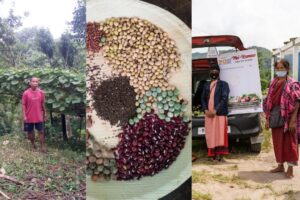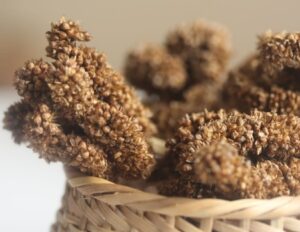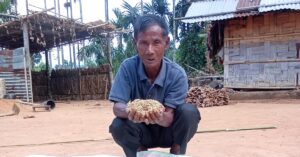Published in The Shillong Times
By Gratia Dkhar
Varied hues of blooming flowers, lemon green leaves erupting, birds making their nests and farmers preparing to sow new seeds are sights that mark the arrival of spring. This year too, nature continues wit its transition and surround us with a reminder of its beauty, but the world is caught in a grim fight and any feeling of overflowing happiness is restraint.
To many of my generation, the sufferings and crisis of the world wars and the pandemics that paralysed the global economy were until recently, what we have only learned in historical texts, news or from anecdotes narrated by our elders. But nothing did prepare us to face the attack charged by the stealthy foe, the COVID-19, one that the United Nation Secretary-General Antonio Guterres, described as a disease “attacking societies at their core, claiming lives and people’s livelihood.” Nations watched healthcare personnel in the forefront fight the pandemic that is threatening the health and lives of hundreds and millions of people around the world. Global leaders have notified the gravity of COVID-19 pandemic that has created a situation parallel to being “at war”. Countries have imposed a series of measures to contain the virus and flatten the curve; its battle plan included enforced lockdown, shut down of educational institutions and businesses, restriction on travel.
On 24th March, 2020, when the Indian Prime Minister announced a 21 days nationwide lockdown as a measure to curb the spread of the virus, it also led to the unintended consequence of causing fear and anxiety amongst the general public. Despite the Government assuring its citizens of having an adequate supply of essential items, it did less to prevent people from panic buying. In the early days of the lockdown, when the curfew was lifted to allow residents to purchase essential food items, an almost chaotic scene erupted. As I stood in a queue in front of a departmental store, waiting for my turn, people were seen crowding around tiny grocery stalls, pushing each other trying to hold on whatever perishable goods they could lay hands on, completely disregarding the call for social distancing; and the plight of young and old walking distant kilometres to reach the market only having to purchase the leftovers. Such a scene shows the fragility of the food supply chain. We also run a risk of exacerbating malnutrition especially when boosting the body’s immune system is vital to ward off the infection.
My thoughts ran to the thriving kitchen garden that our parents left behind, grateful that we could rely upon it during this time of crisis. My late mother would say, “mynda em thma, ki jhur wa pynim, ymtoh ki syntu,” [when there is a war, vegetables will keep you alive not flowers] over the growing trend of ornamental gardens; and every time we complained of the terrace being consumed by untamed beanstalks, she would chide, “Sep ai u lai pu re, mynda ymtip tang u pynmih bam lajong,” [Pursuing education is a waste if one doesn’t even learn how to grow one’s own food]. Those were words we paid no heed to because the system modelled us to believe that we will find a job, earn the money and buy the food because we thought they come easy and unlimited, but time has proven us wrong.
We are looking at uncertain times, and we need to “rethink on how we feed ourselves.” The possibility of extended confinement, travel restriction and fear of disruption of the industrial agricultural production due to unavailability of labour and food not reaching the markets, creates a looming prospect of a global food crisis and economic depression. With stocks in supermarkets running low and trips to grocery stores fraught with the fear of contracting the virus, reports of how the pandemic is reviving the victory garden in many countries has been highlighted as a rapid response to the threat of a food crisis.
The victory garden, coined by Charles Lathrop Pack, was originally called war gardens or liberty gardens. The movement was introduced during World War I but came into prominence during World War II. At the time when countries were dealing with food shortages and rationing, America started a propaganda movement urging its people to grow their own food to maintain self-sufficiency. The citizens acted to the call, taking it as a patriotic duty and started growing vegetable gardens in whatever space was available-lawns were pulled, rooftops and random pots were used to sow the victory garden seeds. The harvest supplemented their rations, boosted their morale and contributed to ration of the troops. Some estimated that at some point, home gardens, school gardens and community gardens contributed about 40 per cent of America’s fresh vegetables.
While we hope that the pandemic does not intensify the adversities, nonetheless, starting a home garden during this lockdown can definitely build our resilience, one that would ease our food expense and ensures our nutritional needs. There are also multiple studies on the therapeutic benefits of gardening relating to longevity and mental well being. Our labour may sustain us just a few meals, but the very act of producing our food is empowering, alleviate stress and give us back the feeling of being independent and being in control.
Gardening is also an important teaching tool. In the school gardens established in collaboration with NESFAS, students learn where their food comes from, what to grow and how to care for them. With the state already having a high percentage of children malnourished, the school garden was a medium to educate the children about the consumption of the ten food groups and planting of those food groups missing from the diet was encouraged. The produce harvested was then incorporated in the school feeding programme or the Mid-Day Meal. With schools closed and children cooped up at home, teaching them to grow their own food today can be rewarding and produce long term benefits.
In a study on Indicators of Resilience in Social-Ecological Production Landscape in Khweng village, Ri Bhoi District, the community ranked highest for Agrobiodversity. This can be attributed to the food system of the indigenous people that include diverse production systems: kitchen gardens, shifting fields, wetlands and the forests. While shifting fields and wetlands contribute an annual harvest and the forests provides for seasonal wild edibles, it is the produce from kitchen gardens that supplement a major part of their daily diet. Two years into the current project, “No one shall be left Behind Initiative”, and it is always inspiring to be walked through kitchen gardens of indigenous champions where around twenty or more variety of crop plants are being cultivated. It also comes with no surprise that, when we in the urban faced rationing of perishable goods at the very onset of the lockdown, it was the resilient local food system of our communities that contributed to supplementing our requirements. At the core of a resilient local food system is the foundation laid by the seeds that have been selected, collected, conserved and developed for centuries. Exchanging seeds with neighbours and friends holds a cultural significance in the local farming of the indigenous communities, who believe in the principle of “sharing to prevail.”
The lockdown coinciding with the sowing season is a good time to start a garden, even in limited spaces. Food scraps like ginger, onion, carrots, lettuce can be regrown, whole spices like coriander seeds, cumin seeds, pepper can be sown and if the last shopping list included herbs like mint, chameleon plant (Jamyrdoh) or Indian pennywort ( Khliang syiar), those can be easily propagated. The garden can be diversified by including food plant groups like Iron-rich green leafy vegetables, nuts and seeds, Vitamin-A rich vegetables such carrots, pumpkins and fruit plants. Diversifying the garden enriches the biodiversity while also supporting nutrition. Saving and sharing of seeds is vital for sustainability of home gardens. In these hours of social distancing, revitalizing the old tradition of sharing and swapping seeds with neighbours is symbolic of collaborative action to create our own sustenance and strengthen our advocacy of food sovereignty.
Leah Penniman, author of “Farming While Black”, in an interview with the New York Times said, “What we stand for now, is what our elders and ancestors have always stood for” and added that, “To free ourselves, we must feed ourselves.” Home gardens at the moment may only be a temporary solution, guided by inspiration and to reconnect with nature. But this crisis is also an opportunity to be awakened to the externalities of our food system. And when the upheaval is overcome, the lessons learned can help us surge forward to lead a transformation to re-indigenise our relationship with our food system.
About the writer
Gratia Dkhar is an Associate in NESFAS and can be reached at gratia.nesfas@gmail.com




